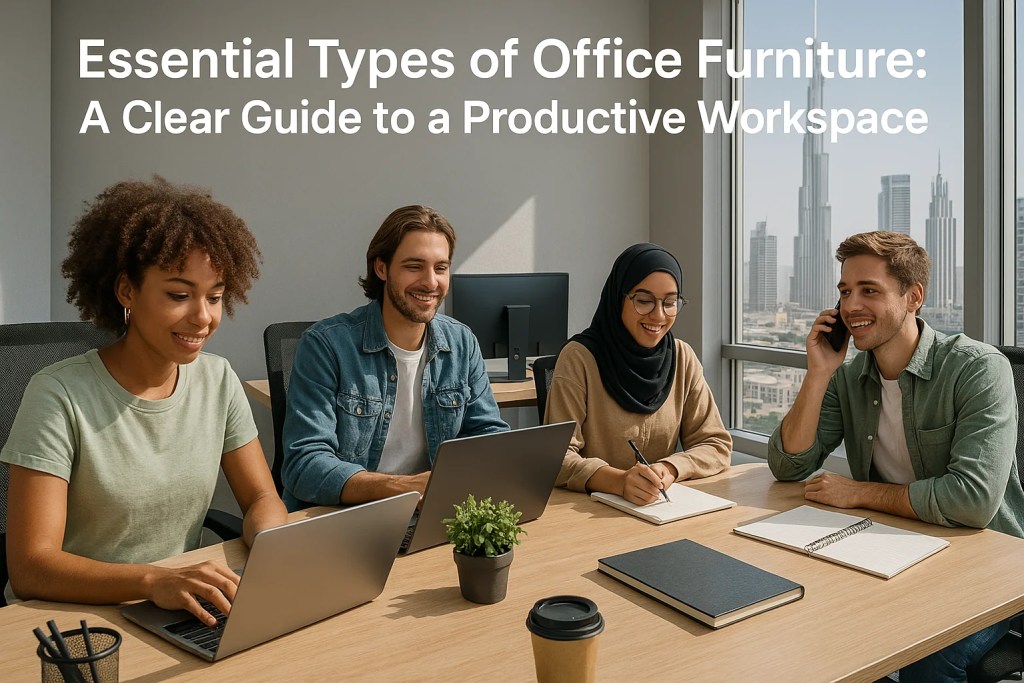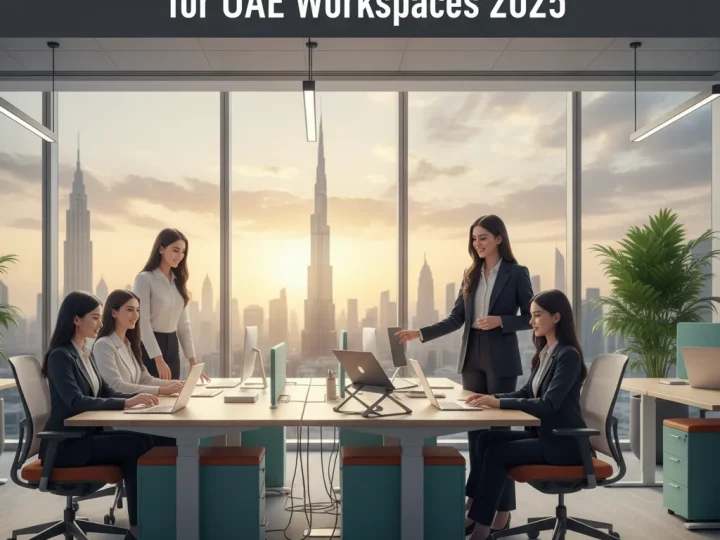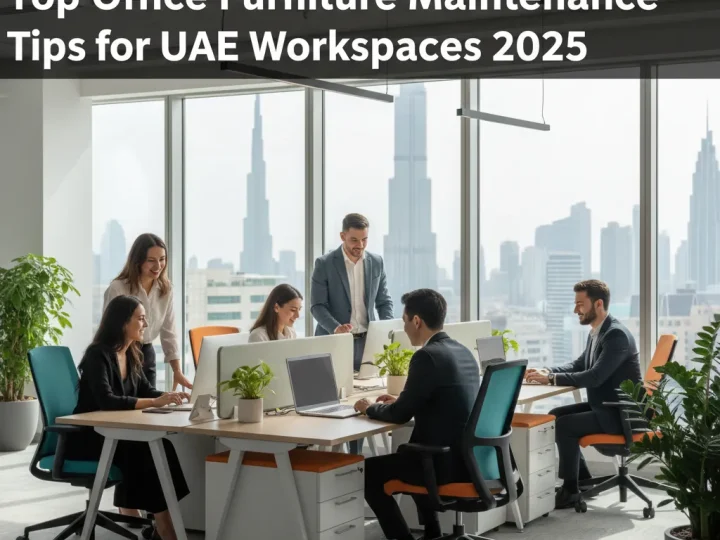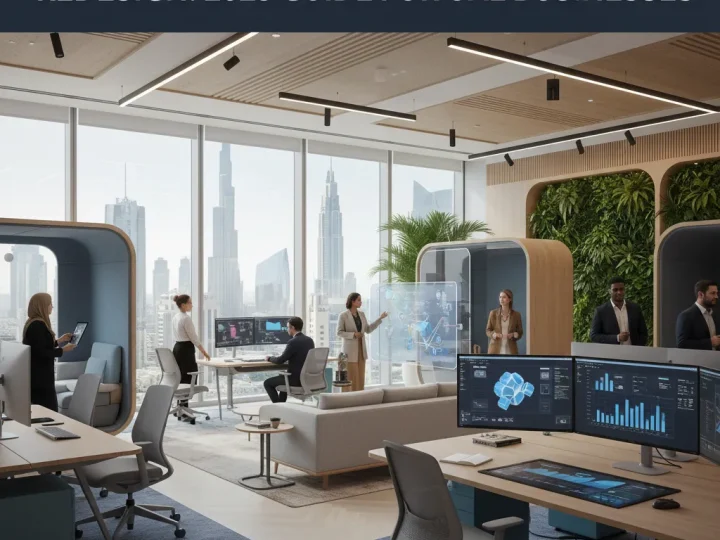The world of office furniture is changing rapidly—global trends show a shift toward flexibility and employee well-being as companies rethink their workspaces. But here’s the kicker: while aesthetics often steal the spotlight, it’s not the looks that drive productivity. In fact, the real game changer is ergonomics. Investing in the right types of office furniture can boost employee performance and satisfaction, transforming a dull office into a thriving hub of creativity and efficiency.
Office Furniture Categories Overview
Navigating the world of office furniture can be overwhelming with so many options available. Understanding the different types of office furniture categories not only helps in making informed purchasing decisions but also ensures your workspace is functional, comfortable, and conducive to productivity. Let’s break down the main office furniture categories that form the backbone of any efficient workplace.
Core Functional Categories
Office furniture typically falls into several essential categories, each serving specific purposes in the workplace environment. The foundation of any office setup begins with desks and workstations—the primary surfaces where daily tasks are performed. According to research on sustainable office design, the global trend in office furniture is shifting toward flexibility and employee well-being, with desk solutions that accommodate both individual work and collaboration.
Seating forms another critical category, encompassing task chairs, executive chairs, guest seating, and collaborative seating options. Quality office chairs should provide proper ergonomic support to prevent discomfort and potential health issues during long working hours. Studies have consistently shown that proper ergonomic seating can reduce workplace injuries and increase productivity by up to 17%.
Storage solutions constitute the third fundamental category, including file cabinets, bookcases, credenzas, and storage units that help maintain organization and reduce clutter. These pieces are essential for document management and keeping work essentials accessible yet orderly.

Specialized Furniture Categories
Beyond the core categories, several specialized types of office furniture address specific workplace needs. Conference and meeting furniture includes conference tables, presentation equipment, and boardroom seating designed to facilitate effective communication and collaboration.
Reception area furniture creates crucial first impressions for visitors and clients, typically featuring reception desks, lobby seating, and occasional tables that reflect your company’s brand and culture.

Ancillary furniture encompasses supplementary pieces like mobile pedestals, privacy screens, whiteboards, and monitor arms that enhance functionality and comfort in the workspace. These items may seem secondary but often significantly impact workflow efficiency.
Emerging Office Furniture Categories
As work patterns evolve, new types of office furniture continue to emerge. Flexible and modular furniture systems allow for quick reconfiguration of spaces to accommodate different activities and team sizes. These adaptable solutions are increasingly popular as organizations embrace hybrid work models.
Wellness-focused furniture represents another growing category, with standing desks, active seating options, and biophilic elements that promote physical movement and connection to nature during the workday. This trend reflects increasing awareness of how the physical environment affects employee health and productivity.

The office furniture market also now includes smart furniture—pieces with integrated technology such as built-in power outlets, wireless charging capabilities, and connectivity features that support our increasingly digital work processes.
Understanding these various types of office furniture categories provides a framework for creating a comprehensive workplace that balances functionality, comfort, and aesthetic appeal. When selecting office furniture pieces, consider how each category contributes to your overall workflow and organizational culture.
Key Takeaways
| Takeaway | Explanation |
|---|---|
| Understanding Office Furniture Categories | Office furniture is divided into core functional categories including desks, seating, and storage, as well as specialized and emerging types, which are essential for creating a productive workspace. |
| Prioritize Ergonomics for Health and Productivity | Investing in ergonomic office furniture can prevent health issues and boost productivity, with organizations witnessing up to 17% increases in performance when proper ergonomic principles are applied. |
| Strategic Space Planning is Crucial | A strategic approach to space planning optimizes workflow and minimizes disruptions, encouraging effective communication and productivity among employees. |
| Material and Style Choices Impact Longevity and Perception | The choice of materials and styles for office furniture influences both durability and how the company is perceived, necessitating a thoughtful selection that aligns with organizational culture. |
| Implementing Maintenance and Budget Strategies | Establishing a structured budget and maintenance plan helps maximize the longevity and value of office furniture, ensuring it meets evolving organizational needs effectively. |
Ergonomics and Comfort Benefits
The importance of ergonomics in office furniture cannot be overstated. Beyond mere comfort, ergonomically designed furniture directly impacts employee health, productivity, and your company’s bottom line. When selecting different types of office furniture, understanding ergonomic principles should be a top priority.
Physical Health and Well-being
Poorly designed office furniture can lead to a host of physical problems. Office workers who spend long hours at improperly configured workstations often report back pain, neck strain, wrist discomfort, and eye fatigue. These issues aren’t just uncomfortable—they can develop into chronic conditions that affect quality of life both in and outside the workplace.
Ergonomically designed chairs, desks, and accessories work together to support the body’s natural posture. Quality task chairs should offer adjustable lumbar support, seat height, armrests, and tilt mechanisms to accommodate different body types. According to research on workplace ergonomics, implementing proper ergonomic principles can significantly reduce musculoskeletal disorders and related health problems that stem from poor workplace conditions.
Standing desks and height-adjustable workstations have gained popularity as research continues to highlight the dangers of prolonged sitting. These versatile furniture options allow employees to alternate between sitting and standing throughout the day, promoting movement and reducing the strain associated with maintaining a single position.
Productivity and Performance Enhancement
The connection between physical comfort and cognitive performance is well-established. When employees aren’t distracted by physical discomfort, they can focus more effectively on their work. Ergonomic office furniture reduces the micro-distractions caused by shifting, stretching, and adjusting in an uncomfortable chair or at an unsuitable desk height.
Studies show that workplaces investing in ergonomic furniture often see measurable productivity improvements. Workers report better concentration, fewer breaks needed for physical relief, and greater stamina throughout the workday. The initial investment in quality ergonomic furniture types typically pays dividends through enhanced output and work quality.
Economic Benefits for Organizations
While premium ergonomic office furniture may require a higher upfront investment, the long-term economic benefits are substantial. Organizations that prioritize ergonomics often experience:
- Reduced absenteeism related to musculoskeletal issues
- Lower workers’ compensation claims and healthcare costs
- Decreased employee turnover due to improved workplace satisfaction
- Enhanced recruitment potential when showcasing commitment to employee well-being
Consider that the cost of replacing a valued employee can range from 50% to 200% of their annual salary. When viewed through this lens, investing in proper types of office furniture becomes not just a health initiative but a sound business strategy.
Psychological Comfort and Satisfaction
Ergonomics extends beyond physical comfort to psychological well-being. Thoughtfully designed workspaces with appropriate furniture signal to employees that their comfort and health are valued. This perception contributes to workplace satisfaction, engagement, and loyalty.
The psychological benefits also extend to aesthetic considerations. When selecting office furniture types, consider not only ergonomic functionality but also design elements that create a pleasant, inspiring environment. Colors, materials, and styles all contribute to the overall psychological comfort of a workspace.
When planning your office furniture layout, remember that ergonomics isn’t just about individual pieces—it’s about how they work together to create a harmonious, functional environment. The best ergonomic solutions consider workflow, communication patterns, and the specific tasks performed in each area of your workplace.
Designing an Efficient Workspace
Creating an efficient workspace involves more than simply purchasing various types of office furniture and arranging them randomly. A thoughtfully designed office can significantly impact productivity, employee satisfaction, and overall business performance. Let’s explore how to strategically incorporate different office furniture pieces to create a workspace that truly works.
Space Planning and Layout Optimization
Before selecting specific office furniture pieces, begin with a comprehensive space planning exercise. Consider the total square footage available, architectural features like windows and columns, and the number of employees who need accommodation. Map out traffic patterns to ensure smooth flow throughout the space and minimize disruptions.
The layout should reflect your organization’s workflow and communication needs. If collaboration is essential to your operations, create open areas with modular furniture that can be reconfigured as needed. For tasks requiring concentration, incorporate quiet zones with appropriate acoustic solutions. According to a study of remote work environments, proper space planning is critical even in home office setups, where issues like inadequate lighting, lack of privacy, and insufficient space can significantly impact productivity.
As you plan, consider the relationship between different functional areas. Position departments that frequently interact near each other to reduce unnecessary movement and facilitate communication. Similarly, locate shared resources like printers, supply storage, and break areas where they’re accessible but don’t create bottlenecks.
Furniture Selection for Functional Zones
Different areas of your office serve distinct purposes, and the types of office furniture you select should support these specific functions. Here’s how to approach furniture selection for key zones:
Individual Workstations: Choose desks and seating that accommodate the primary tasks performed. For computer-intensive work, ensure adequate surface area for monitors at proper viewing heights. Consider privacy needs—determine whether open benching systems or partial privacy panels are more appropriate for your team’s work style.
Collaborative Spaces: Equip meeting areas with conference tables that support your typical group size. Include comfortable seating that encourages participation during longer sessions. Incorporate technology integration with power access, cable management, and display options to facilitate presentations and video conferences.
Break and Relaxation Areas: Create inviting spaces with comfortable lounge furniture that encourages employees to genuinely disconnect during breaks. Include a variety of seating options from café-style tables and chairs to more relaxed lounge pieces that accommodate different preferences.
Reception and Client Areas: Select furniture that makes a strong first impression and reflects your brand identity. Durability is particularly important in these high-traffic zones, as is comfort for visitors who may be waiting.
Flexibility for Future Adaptation
The modern workplace is constantly evolving, and your office furniture should be able to adapt accordingly. Invest in modular systems and reconfigurable pieces that can be adjusted as your needs change. Mobile furniture elements like rolling whiteboards, portable privacy screens, and tables with castors allow teams to customize their environment for specific projects or activities.
Consider multipurpose furniture that serves different functions throughout the day. Conference rooms equipped with tables that can be broken down into smaller configurations, or lounge areas that can transform into informal meeting spaces, maximize the utility of your square footage.
Technology Integration and Connectivity
In today’s digital workplace, technology integration is a critical aspect of furniture selection. Look for desks and tables with built-in power outlets, USB ports, and cable management solutions. Consider how monitors, laptops, phones, and other devices will be supported and connected.
Storage needs are evolving as well—with less paper but more personal devices and equipment. Select storage solutions that accommodate these changing requirements, including charging stations and secure places for personal items.
By thoughtfully considering how various types of office furniture work together in your specific environment, you can create a workspace that not only looks professional but actively supports your organization’s goals and working styles. Remember that the most efficient office is one designed around your team’s actual needs rather than following generic trends or formulas.
Choosing the Right Style and Material
When furnishing your office, the style and material of your furniture play crucial roles beyond aesthetics. These elements affect durability, maintenance requirements, employee comfort, and how your brand is perceived. Understanding how to select appropriate materials and styles for different types of office furniture will help you create a workspace that’s both functional and visually appealing.
Material Considerations for Longevity and Function
Office furniture materials should be selected based on their intended use, location, and expected lifespan. High-traffic areas require particularly durable materials that can withstand constant use without showing wear.
For desks and workstations, engineered wood products like medium-density fiberboard (MDF) with laminate finishes offer a good balance of durability and cost-effectiveness. Solid wood provides a premium look and excellent longevity but comes at a higher price point. Metal components, particularly for desk frames and legs, provide structural stability and modern aesthetics.
Seating materials deserve special attention since they directly impact comfort and maintenance. Commercial-grade fabrics with high rub counts (typically 100,000+ double rubs) ensure chairs will maintain their appearance despite daily use. Mesh backs on task chairs offer breathability and comfort during long work sessions. For executive and reception furniture, leather or high-quality faux leather provides an upscale appearance, though genuine leather requires more maintenance.
Storage solutions benefit from materials that combine strength with reasonable weight. Steel filing cabinets remain the standard for document security and durability, while bookcases and shelving might use a combination of wood, metal, and glass depending on the visual impact desired.
Material selection also impacts your environmental footprint. Many manufacturers now offer office furniture made from recycled or sustainably sourced materials. As research on material selection suggests, considering the full lifecycle impact of materials is becoming increasingly important in purchasing decisions.
Style Alignment with Brand Identity
Your office furniture style communicates volumes about your company’s values and personality. A law firm might select traditional wood furnishings to convey stability and authority, while a tech startup might opt for sleek, minimalist designs to project innovation and agility.
Consider these common office furniture style categories:
- Traditional: Features warm wood tones, ornate details, and classic silhouettes. Communicates establishment, reliability, and timelessness.
- Modern/Contemporary: Characterized by clean lines, minimal ornamentation, and often incorporates materials like metal, glass, and engineered wood. Projects progressive thinking and efficiency.
- Industrial: Utilizes raw materials like exposed metal, reclaimed wood, and concrete elements. Suggests creativity, transparency, and an unconventional approach.
- Transitional: Blends traditional comfort with contemporary lines for a balanced approach that appeals to diverse audiences.
While consistency creates a cohesive look, intentionally mixing styles can define different functional zones. For example, your primary workstations might feature practical, ergonomic designs while breakout areas incorporate more relaxed, eclectic pieces that encourage creative thinking.
Color Psychology and Visual Impact
Color choices for your office furniture significantly influence mood and behavior. While neutrals (whites, grays, and natural wood tones) provide versatility and timelessness, strategic use of color can energize or calm different areas.
Blues tend to promote focus and tranquility, making them appropriate for areas requiring concentration. Greens connect to nature and can reduce stress, while yellows and oranges stimulate creativity and communication—ideal for collaborative spaces. Reds create energy but should be used sparingly as accents rather than dominant colors.
Consider implementing your brand colors through furniture accents rather than large pieces. This approach allows you to maintain your identity while avoiding visual fatigue or the need for expensive replacements if your branding evolves.
Balancing Trends with Timelessness
The various types of office furniture available today range from classic designs to cutting-edge trends. While trendy pieces might make your office look current initially, they risk appearing dated quickly. A wiser approach is investing in timeless foundational pieces (desks, storage, primary seating) while incorporating trends through more easily replaceable elements like accent furniture, accessories, and collaborative pieces.
If you’re drawn to a particular trend, consider how adaptable it is. Modular furniture systems that can be reconfigured as needs change offer more longevity than highly specific designs tied to current workflows. Similarly, neutral-colored major furniture pieces can be refreshed with trendy accent colors through cushions, accessories, or area rugs.
By thoughtfully selecting materials and styles that align with both your practical needs and organizational identity, your office furniture becomes more than functional equipment—it becomes an expression of your company culture and values.
Budgeting and Maintenance Strategies
Creating a realistic budget for office furniture and implementing effective maintenance strategies are essential aspects of managing your workspace assets. These considerations ensure that your investment in various types of office furniture delivers long-term value while supporting your organization’s operational needs.
Strategic Budget Allocation
When establishing a budget for office furniture, consider taking a tiered approach that prioritizes spending based on impact and usage. While it might be tempting to cut costs across the board, strategic investment in certain areas can yield significant returns in productivity and durability.
High-priority investments should include ergonomic seating and adjustable workstations. These directly impact employee health and productivity, making them worth the premium investment. For example, a high-quality task chair might cost $500-$1,200, but when amortized over its 10-15 year lifespan and considering the potential reduction in workplace injuries, the daily cost becomes minimal compared to the benefits.
Mid-range investments typically include conference room furniture, collaborative spaces, and storage solutions. These areas benefit from quality construction but may not require the same premium features as primary workstations. Look for a balance between durability and cost-effectiveness.
Cost-saving opportunities can be found in areas like guest seating, accessory furniture, and decorative elements. These items generally see less intensive daily use and can be selected from more economical options without significantly impacting functionality.
Consider phasing your furniture purchases if budget constraints are tight. Begin with essential workstations and seating, then gradually add collaborative spaces and accessory furniture as resources allow. This approach enables you to prioritize ergonomics and core functionality while spreading costs over time.
Lifecycle Cost Considerations
The initial purchase price represents only part of your office furniture’s total cost of ownership. A more comprehensive budgeting approach considers:
- Delivery and installation costs: Professional installation ensures proper assembly and placement, reducing the risk of damage and injury.
- Maintenance requirements: Some materials and finishes require more frequent or specialized maintenance.
- Replacement schedules: Different types of office furniture have varying expected lifespans—quality seating might last 10+ years, while technology-integrated pieces may become obsolete sooner.
- Reconfiguration costs: If your workspace needs frequent updating, consider how easily your furniture can be rearranged without professional assistance.
According to research on maintenance strategies, choosing the right maintenance approach based on your specific conditions can significantly impact both costs and furniture longevity. Smaller organizations might benefit from corrective maintenance (addressing issues as they arise), while larger companies with more specialized furniture might find preventive maintenance more economical in the long run.
Effective Maintenance Planning
Implementing a structured maintenance plan helps extend the lifespan of your office furniture investment. Your approach should include:
Regular inspection schedules to identify developing issues before they become serious problems. Task chairs should be examined quarterly for loose components, functioning mechanisms, and fabric condition. Desks and tables should be checked for stability and surface integrity.
Cleaning protocols appropriate to each material type. Wood surfaces require different care than laminates; mesh chair backs need different attention than leather upholstery. Document these protocols and ensure maintenance staff or cleaning services are properly trained.
Quick-response procedures for addressing damage. Having established relationships with furniture repair specialists or warranty service providers ensures prompt attention to issues that could worsen if neglected.
Inventory management of spare parts for frequently replaced components like casters, arm pads, and hardware. Having these items on hand reduces downtime when repairs are needed.
Warranty Management and Vendor Relationships
Maximizing the value of manufacturer warranties requires diligent documentation and relationship management. Create a centralized system for tracking:
- Warranty terms and durations for different office furniture types
- Required maintenance to keep warranties valid
- Warranty claim procedures and contact information
- Service history for each major furniture piece
Build relationships with your furniture vendors beyond the initial purchase. Many manufacturers and dealers offer maintenance programs, refresh options, and buy-back programs that can reduce your total cost of ownership. Some even provide furniture-as-a-service options that include regular maintenance and updates.
Sustainable Disposal and Replacement
As office furniture reaches the end of its useful life, responsible disposal becomes an important consideration. Develop a strategy that might include:
- Refurbishment of still-functional pieces
- Donation to nonprofit organizations (which may provide tax benefits)
- Resale through specialized office furniture resellers
- Manufacturer take-back programs for environmentally responsible recycling
By approaching office furniture as a long-term investment rather than a one-time expense, you can develop budgeting and maintenance strategies that maximize value while ensuring your workspace remains functional, professional, and supportive of your team’s needs.
Frequently Asked Questions
What are the core types of office furniture needed for a productive workspace?
Core types of office furniture include desks and workstations, seating options like task chairs and collaborative seating, and storage solutions such as file cabinets and bookshelves. These elements create a functional and organized workspace essential for productivity.
How does ergonomic office furniture impact employee health and productivity?
Ergonomic office furniture is designed to support the natural posture of the body, reducing discomfort and the risk of chronic conditions. Studies have shown that investing in ergonomic furniture can boost productivity by up to 17% by minimizing distractions from physical discomfort.
What should I consider when planning an office layout?
When planning an office layout, consider the flow of traffic, collaboration needs, and specific functions of different areas. Ensure that individual workstations support concentration, while collaborative spaces facilitate teamwork, allowing for an efficient use of space.
How can I choose the right materials and styles for office furniture?
Select materials based on durability and maintenance, choosing options that balance quality and cost. Align the style of furniture with your company’s brand identity, and consider color psychology to create an inspiring workspace that enhances productivity.
Transform Your Workspace into a Productive Haven
Are you tired of juggling discomfort with distraction in your office? Poorly designed office furniture can severely impact employee health, productivity, and overall workplace satisfaction—a challenge highlighted in our guide on essential types of office furniture. Many organizations are realizing that investing in ergonomic solutions is not just about aesthetics; it’s about creating a thriving ecosystem where creativity and efficiency can flourish. Imagine a workspace where every piece is designed with well-being in mind!

Elevate your office experience with our customizable range of ergonomic office furniture available at SAGTCO. Our products blend durability with style, ensuring every inch of your workspace fosters productivity and well-being. Don’t wait for discomfort to steal your team’s focus! Let us help you design a workspace that inspires—visit us now to explore solutions tailored to your needs. Embrace change and empower your team with furniture that adapts perfectly to your workplace dynamics. Act now and take the first step towards an upgraded workspace!





